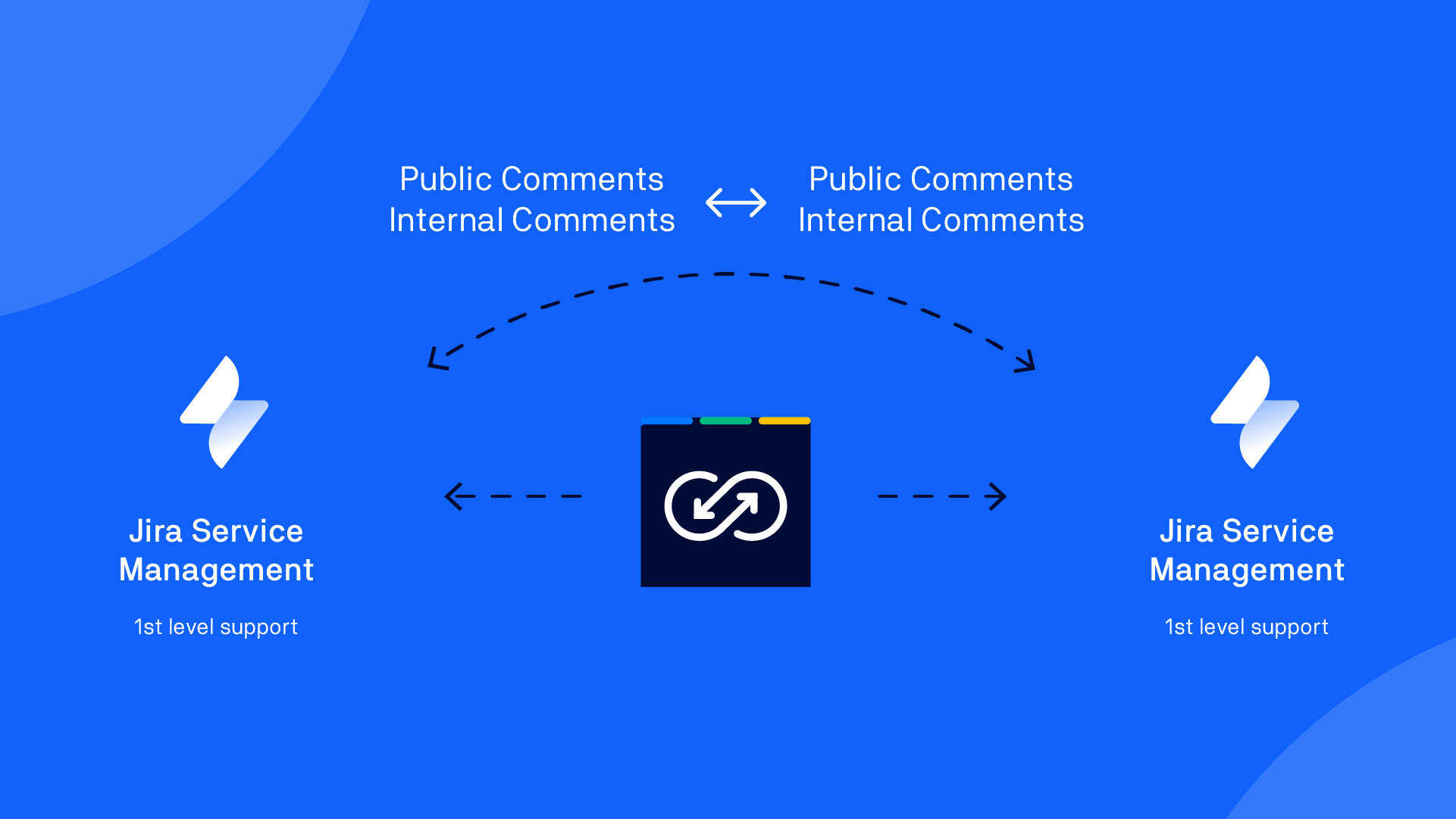Mirroring (same-level support)
Synchronize two Jira Service Management projects on the same level (usually 1st level support projects)

This scenario is recommended if you want to consolidate the information from two or several Service Management projects (for example for multiple customers) to get a complete overview in one place.
Public comments made in one Jira Service Management instance will be created as public comments in the other.
Internal comments made in one Jira Service Management instance will be created as internal comments in the other.
Issues can be created on all Jira Service Management systems, and they will be synchronized to the other.
Configuration guide
Now, we will configure this scenario as a guide. The two sample projects will be configured on the same Jira system: in most real world scenarios, Backbone will synchronize projects on separate Jira systems, but the configuration is very similar in both cases.
Configure the synchronization user
Add the synchronization user to the jira-service-desk-users group
Assign the Service Desk Team role for all synchronized Jira Service Desk projects.
Set up projects
Firstly, set up the two projects that will be synchronized: Project A and Project B both as Jira Service Management projects.
Establish the connection
Now, we have to establish a connection between Project A and Project B – please refer to the guide to creating a new synchronization for step-by-step instructions.
Configure the synchronization
Now, we'll tell Backbone what data to synchronize, and which Jira Service Management scenario we want to use.
On the Issue Synchronization screen, the actions column, click ... > Configure to open up the configuration UI.
On the Issue Types tab, click the Suggestions button, and use the Simple mappings screen to map all the available issue types in both directions
The next step is to configure the synchronization of customer request types. Start by going to the Fields – Default Values tab. On the Project A column, click the + button to open up the Create Default value screen. In the Field box, select Customer Request Type, uncheck the All Issue Types box, and map the following Issue Types:
IT Help to the Default value Get IT Help
Purchase to Default value Purchase request
Access to Default value Request a new account
Now, make the same changes on the Project B column
Go to the Field Mappings tab and click Suggestions, and select the Summary and Description fields for synchronization.
On the Comments tab, enable comments and select the Enriched mapping option (so that when comments are synced between your 1st level teams, you know exactly who wrote them). For the comment visibility, map all comments to the same type of comments which means internal <> internal, public <> public (as in the image below).

To start the synchronization, click Publish Draft > Start.
Next steps
Basic configuration is now complete – you can now go further and configure additional Field Mappings.
